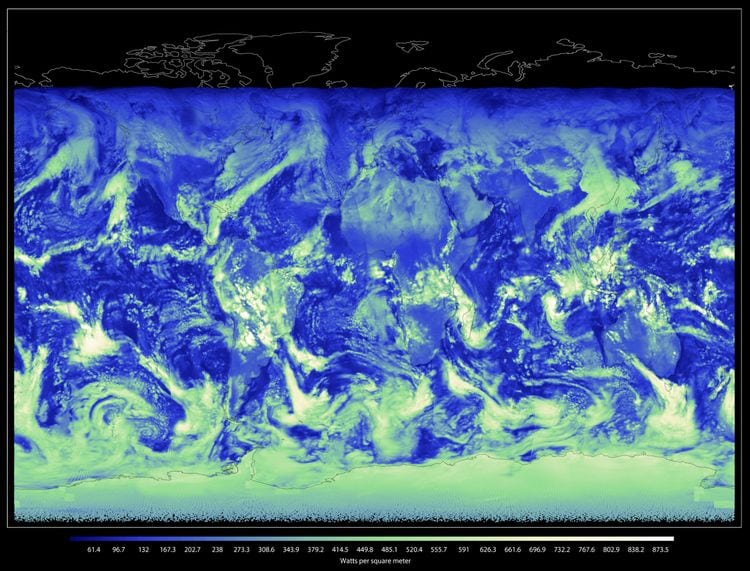Latest News

In this shortwave image from CERES FM6, the white and green shades represent thick cloud cover reflecting incoming solar energy back to space. Photo: NASA.
The National Oceanic and Atmospheric Administration (NOAA) successfully activated two instruments built by Northrop Grumman on its newest weather satellite, which is performing post-launch procedures nominally after reaching orbit. The instruments are the Advanced Technology Microwave Sounder (ATMS), a cross-track microwave sounder, and the Clouds and the Earth’s Radiant Energy System (CERES) FM-6.
United Launch Alliance (ULA) launched the Joint Polar Satellite System 1 (JPSS 1) spacecraft, now known officially as NOAA 20, from Vandenberg Air Force Base, Nov. 18, 2017. According to NOAA, as of Jan. 23, the NOAA 20 ATMS has reached provisional maturity status, declaring ATMS data products potentially ready for operational use. Data gathered by the ATMS Microwave Integrated Retrieval System technology is successfully generating atmospheric temperature vertical profiles from the Earth’s surface to an altitude of 45 kilometers, as well as images of the location and abundance of water vapor, precipitation, and snow and ice cover. Water vapor distribution and vertical temperature science data are critical measurements for improving short- and long-term global and regional weather forecasts, NOAA stated.
CERES FM-6, which measures reflected sunlight and thermal radiation, is also performing as expected. NOAA opened the covers on CERES on Jan. 5, allowing it to scan the surface of the Earth for the first time. CERES allows scientists to collect data to monitor the temperature of the planet and validate models that calculate the effect of clouds in driving planetary heating or cooling. This data can also be used to predict weather events such as El Nino and La Nina, which are climactic fluctuations in the temperature of the tropical Pacific Ocean that can influence weather globally.
The first data collected from the NOAA 20 instruments is preliminary and part of a series of startups and checkouts that will take place before the satellite becomes fully operational later this year.
NOAA 20 will join the NOAA/NASA Suomi National Polar-orbiting Partnership (NPP) satellite in the same polar orbit, operating about 50 minutes ahead of Suomi NPP. The two satellites will revisit the same part of the Earth at different times.
Stay connected and get ahead with the leading source of industry intel!
Subscribe Now